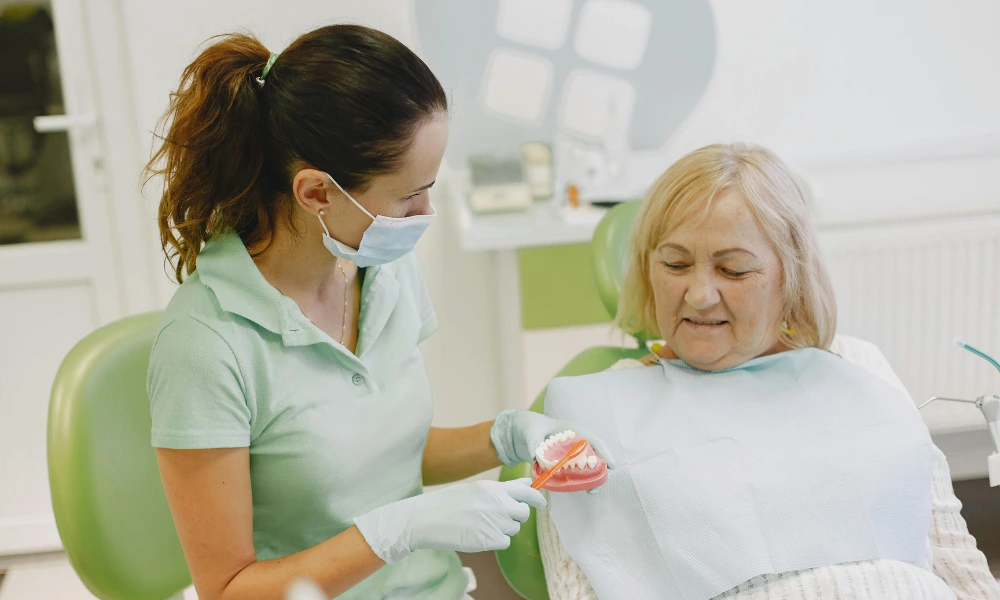What Does the Canadian Dental Care Plan (CDCP) Cover? A Guide for Families, Adults & Seniors
Dental care plays a vital role in your overall health, but cost concerns often delay or prevent people from getting the care they need. That’s why the Canadian Dental Care Plan (CDCP) was introduced to help eligible Canadians access essential oral healthcare without the financial stress.
Whether you’re a parent, a senior, or simply exploring your options, this guide will walk you through what the Canadian Dental Care Plan covers, how to apply, and what it means for you and your loved ones.
What Is the Canadian Dental Care Plan (CDCP)?
The Canadian Dental Care Plan (CDCP) is a national initiative launched by the Government of Canada to provide low- to moderate-income families with coverage for a range of dental services. It aims to reduce out-of-pocket costs for preventive and essential treatments, ensuring everyone can maintain their oral health with confidence.
If you’re wondering whether you’re eligible, check out our guide to Canada Dental Plan eligibility.
Who Is Eligible for the Canadian Dental Care Plan?
To qualify, applicants must:
- You don’t have access to dental insurance
- Have an annual family net income of less than $90,000
- Not have access to private dental insurance
- Be a Canadian resident and have filed a tax return the previous year
Many patients are also asking “when can seniors apply for the Canada Dental Benefit?” The answer is: seniors aged 65 and up can now apply as part of the phased rollout.

If you’re unsure where you stand, the Canadian Dental Care Plan Status Checker is a helpful tool to confirm eligibility and application status.
What Dental Services Are Covered Under the CDCP?
Coverage includes:
- Exams, cleanings, and x-rays
- Fillings and extractions
- Root canals and dentures (in some cases)
- Preventive care and fluoride treatments
Keep in mind: coverage may vary based on income level and treatment category. The goal is to make essential dental services more accessible, not to replace all dental plans, but to support those without coverage.
Does the Canadian Dental Care Plan Cover Braces?
Many families ask, “How much do braces cost in Canada with insurance?” While the CDCP primarily focuses on essential treatments, orthodontics like braces are not currently covered under the standard plan.
Still, it’s worth discussing your specific situation with your dentist. Beacon Hill Dental Centre can help explore other financing options if orthodontic care is needed.
How to Apply for the Canadian Dental Care Plan
If you think you may qualify, you can begin your CDCP application on the official Government of Canada website. The process is simple:
- Log in using your CRA account
- Confirm eligibility
- Submit the application online
Once submitted, you can monitor your application using the Canadian Dental Care Plan Status Checker.
Canadian Dental Care Plan for Seniors and Adults
Special consideration is given to:
- Seniors (65+) – Now eligible as of June 2024
- Adults with disabilities – Can apply later in 2025 as the plan expands
- Parents and guardians – May qualify if they have eligible dependents under 18
Canadian Dental Care Plan FAQs
Dental coverage is changing in Canada, and we’re here to help you make sense of it all. Whether you’re exploring the Canada Dental Benefit for your child or checking your CDCP application as a senior, Beacon Hill Dental Centre is your partner in confident, compassionate care.
Is Beacon Hill Dental Centre a CDCP Provider?
At this time, not all dental clinics are enrolled as providers. At Beacon Hill Dental Centre, we are actively staying informed about CDCP updates and are here to guide our patients through the process.
Whether it’s answering eligibility questions or helping you understand coverage, our team is committed to supporting your oral health journey.
What is the Canadian Dental Care Plan (CDCP)?
The CDCP is a government dental program that helps low- and moderate-income Canadians access essential oral healthcare services.
Who is eligible for the Canadian Dental Care Plan?
Eligibility is based on annual income (under $90,000), lack of private dental insurance, Canadian residency, and a recent tax return.
How do I apply for the Canadian Dental Care Plan?
You can apply online using your CRA account. The process involves confirming your eligibility and submitting your application digitally.
What dental services are covered under the CDCP?
The plan covers exams, cleanings, fillings, extractions, x-rays, fluoride treatments, and some restorative procedures like dentures and root canals.
Does the Canadian Dental Care Plan cover braces or orthodontics?
No, orthodontic treatments like braces are not covered under the CDCP at this time.
When can seniors apply for the Canadian Dental Benefit?
Seniors aged 65 and older became eligible to apply starting June 2024.
How can I check the status of my CDCP application?
You can check your application progress using the official Canadian Dental Care Plan status checker.
Is Beacon Hill Dental Centre a CDCP provider?
We’re keeping up with CDCP developments and are happy to help patients navigate their eligibility, applications, and treatment options.
Recent Comments